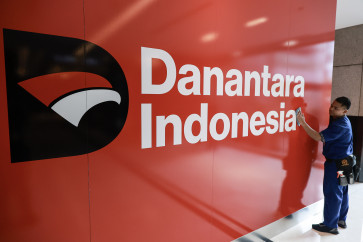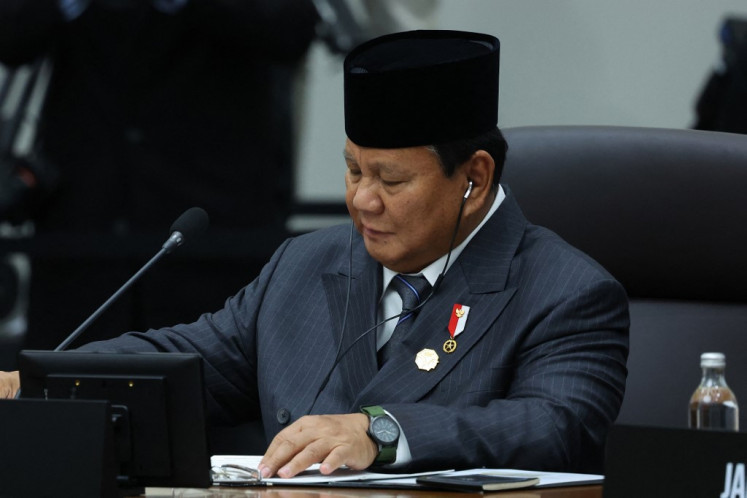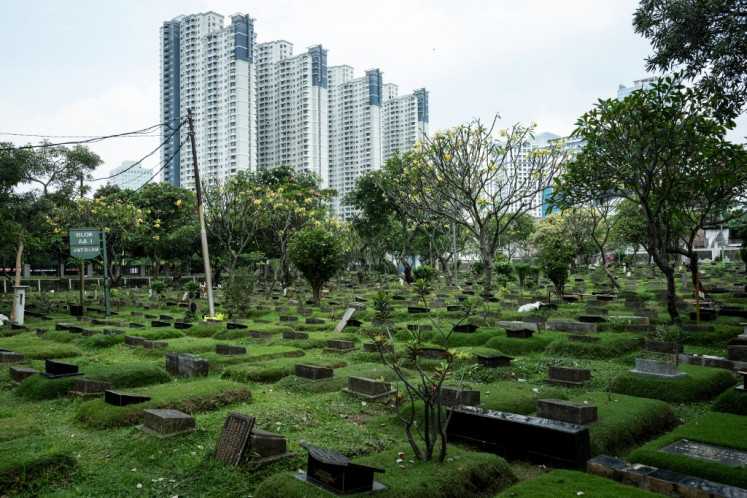Popular Reads
Top Results
Can't find what you're looking for?
View all search resultsPopular Reads
Top Results
Can't find what you're looking for?
View all search resultsEducation key to growth in Indonesia: World Bank
Andrew Mason (JP/Elly Burhaini Faizal)As the largest economy in Southeast Asia and the fourth-most populous country in the world, Indonesia is striving to improve the quality of its human resources so it can boost the competitiveness of its products and services in the global market
Change text size
Gift Premium Articles
to Anyone
Andrew Mason (JP/Elly Burhaini Faizal)
As the largest economy in Southeast Asia and the fourth-most populous country in the world, Indonesia is striving to improve the quality of its human resources so it can boost the competitiveness of its products and services in the global market.
President Joko “Jokowi” Widodo recently presented the 2020 state budget proposal that carried the theme “state budget for competitiveness acceleration through innovation and empowerment of human resources quality” during the state of the union address and financial note speech in front of legislators and policymakers in mid-August. Formal education, he said, was the core to human capital development.
The Jakarta Post’s Rachmadea Aisyah talked to The World Bank’s acting chief economist for East Asia and Pacific, Andrew Mason, recently to further examine the role of education and other basic public services in today’s economy.
Question: In your "A Resurgent East Asia: Navigating a Changing World" report, you mentioned a lot about Indonesia and cases of inequality, such as differences in basic access in different parts of the country. How much has inequality harmed Indonesia’s growth?
Answer: It’s a very important question, especially if we think in terms of inequality of opportunity. In the report, for example, we talk about inequality in people’s access to the internet or other sources of digital technology. We talk about differences in access to education and also differences in the quality of education people receive.
So, if you live in the capital or a large urban center and you’re going to secondary school, you’re almost certainly getting a better quality education than if you are going to a small high school in a remote, rural area. But for countries to take the most advantage of changes in the global economy, people will need to have affordable access to digital technology and they will need to have the skills to be able to use and make the most of those technologies.
But not everybody has access to the internet or digital literacy. So, in a world where technology driven business opportunities are becoming more and more important, if we don’t give the people the technological and personal tools to take advantage of that, there is a risk that they’ll fall behind.
One of the things we have highlighted in the report is that even countries, including Indonesia, which are doing well and getting all their children in school, are not necessary providing their children with 21st century skills.
So, in order not to fall behind, policymakers will need to make sure that even in the most remote and rural areas, children and their families have access to affordable digital technologies and are attaining basic digital literacy, so they can participate successfully in the 21st century economy.
What do you think can Indonesia learn from its more advanced East Asian and Southeast Asian neighbors?
Let me say two things about that. First, in one way or another, Indonesia and its middle-income neighbors all face similar challenges. Specifically, to make the most of emerging economic opportunities in a rapidly changing global economy, Indonesia and its neighbors will have to adapt their development policies, adopting a more forward looking stance.
I think some of the most useful lessons for Indonesia may come from countries that a generation or two ago were poor or middle income and who have since graduated to high income, like South Korea and Singapore. One lesson is related to human capital, education and skills. The second lesson is related to technology — but really more broadly to innovation — because we think that it will be important for countries in developing East Asia to foster greater innovation to sustain productivity, growth and rising living standards in the future.
[South] Korea and Singapore have always had very high achievements in education, even at lower levels of income. Singapore has the highest score in the world in terms of the human capital index, and South Korea is not far behind it. Strong human capital, based on high quality education, has helped propel those countries from middle- to high-income status over time. And high-quality education is going to be increasingly important because as technology changes people are going to need higher skill levels.
Indonesia, for example, has done a very good job of raising enrolment rates at the primary and secondary level, and that’s an important first step to make sure that everybody gets educated. But the next challenge in terms of education is to raise the skills of people to be prepared to confront the challenges of the 21st century.
The second lesson is that it will be important for countries like Indonesia and its neighbors to foster greater production in the future. In other words, not just to adapt existing models of production but create new ones.
In fact, there are already some good examples in Indonesia from e-commerce. We don’t cover these in our report, but Indonesia has a rapidly growing e-commerce sector, and some of the innovations coming from that sector are quite impressive. More broadly, however, to take advantage of emerging opportunities in the global and regional economy, the roots of innovation will have to go deeper in society and the economy.
One of the lessons in our report is that fostering innovation is not only about making public investments in research and development, which is traditionally how the governments in this region have thought about it, but it is about developing the broader innovation ecosystem.
This requires improving countries’ regulatory and business environments, building stronger human capital and sound digital and physical infrastructure. This can help ensure that firms are in a position to innovate and that people are prepared to use new technologies effectively.
Under President Joko “Jokowi” Widodo’s administration, Indonesia has been maintaining the stable rate of growth of a little above 5 percent. For the next five years, will Indonesia be able to grow at a higher rate than this, considering the untapped nature of human resources and industry potential?
I think the challenge for Indonesia going forward is to make the most of its economic opportunities. It’s in a very good region for growth — in part, because it’s part of regional production networks, sometimes called a global value chain.
The idea is that if Indonesia can continue to strengthen its business and regulatory environment, it will be able to attract more foreign investment. With more foreign investment also comes new technologies, the opportunity to learn from more advanced enterprises and this, in turn, can have positive spillover effects on the economy.
We’ve already talked about strengthening education and skills, which continues to be important. And in Indonesia, there continues to be a need to invest further in physical and digital infrastructure.
So, in other words, there are still opportunities — by improving policies, increasing investment, giving better education and skills to the youth of Indonesia — to enhance Indonesia’s economic performance and to make the most of emerging economic opportunities in the region.










